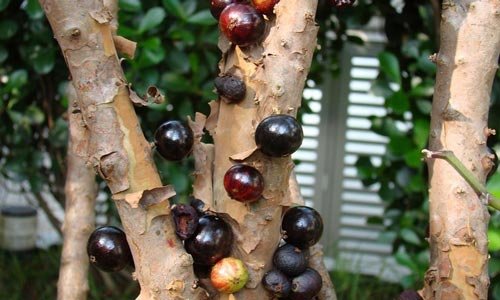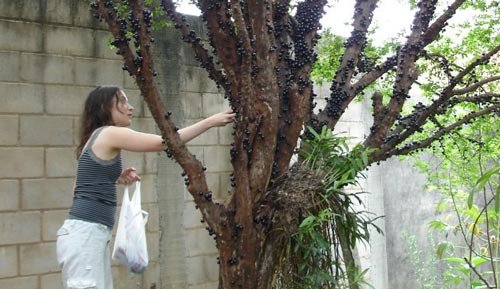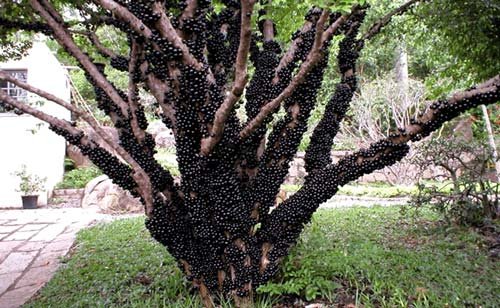The Uniqueness of Brazilian Grapes that Grow in the Tree Trunk.
The uniqueness of Jabuticaba, Brazilian grapes. It grows uncommonly and is different from grapes that we know, because usually grapes propagate with fruit hanging over branches or twigs. While Jabuticaba fruit, grows thickly throughout the tree trunk, from the tip to the base.
Jabuticaba grapes are also known as guaperu, jabuticabeira, jaboticaba, brazilian grape tree, eugenia cauliflora berg and hipavuru.
The shape of the tree is similar to guava fruit, has many thick stems. If we glance at it from a distance, it looks like a tree being surrounded by thousands of black beetle insects.
The fruit harvest itself lasts one or two times a year and is usually used as a fermentation of wine, although it is safe if we eat it directly from the tree.
Its original habitat is Minas Gerias and Sao Paulo, South Brazil with tropical climate conditions. And not only there we can meet it. Even in Indonesia, the Jabuticaba grape from Brazil has long been successfully cultivated in the Ponorogo area, East Java.
The shape of the fruit is small, only about 3 to 4 cm, when it's young, the skin is green and when it's ripe the color will turn purple. If the meat is peeled it is white and reddish white. The taste is very delicious, like grapes mixed with lychees mixed.
Usually, this grape will be produced into food jam or as raw material for wine. And unique if this tree is getting older, then the fruits produced next will be different. Cool, right.
In addition to the pleasure to be used as a direct meal, the efficacy of Brazilian Jabuticaba grapes has long been believed to be effective for curing various diseases, such as anti aging aka premature aging, improving stomach digestion and high anti-oxidant content which is also effective for killing cancer cell growth.


